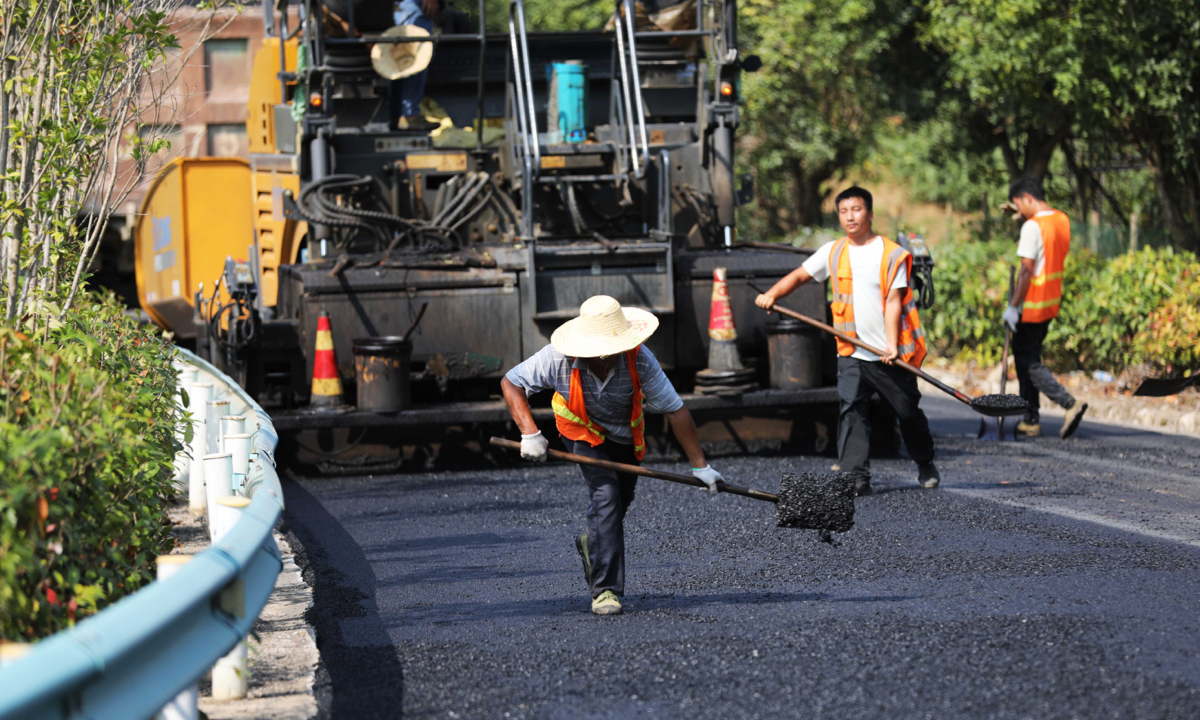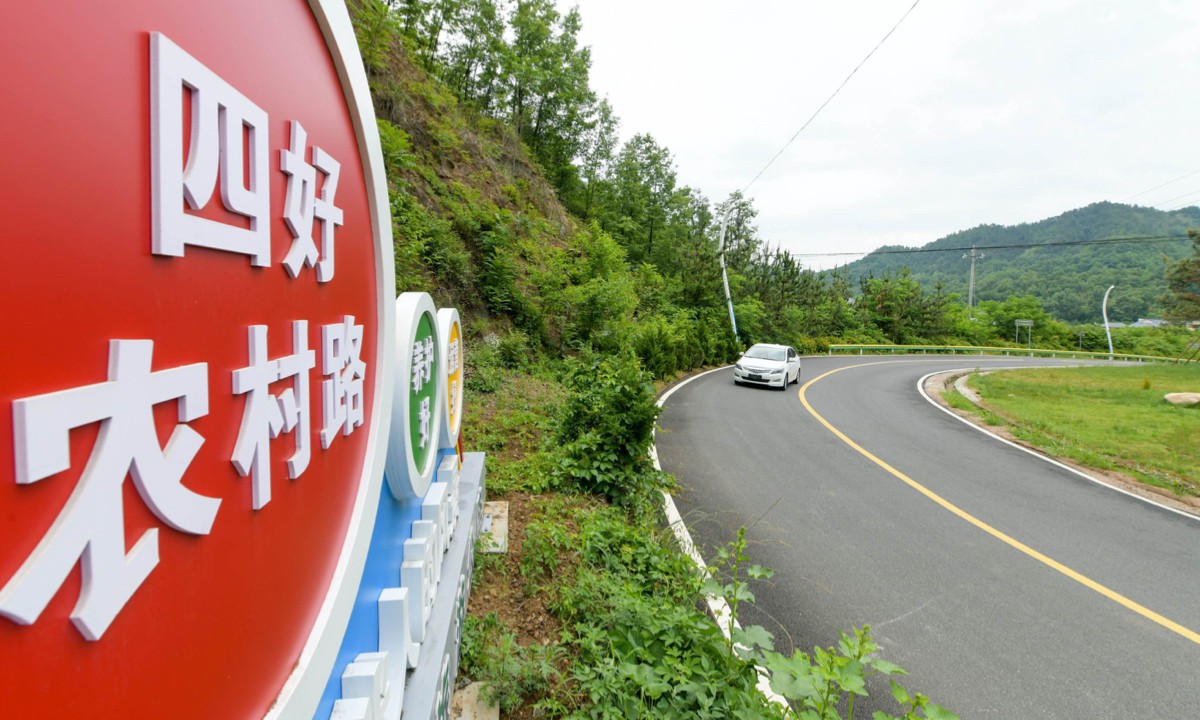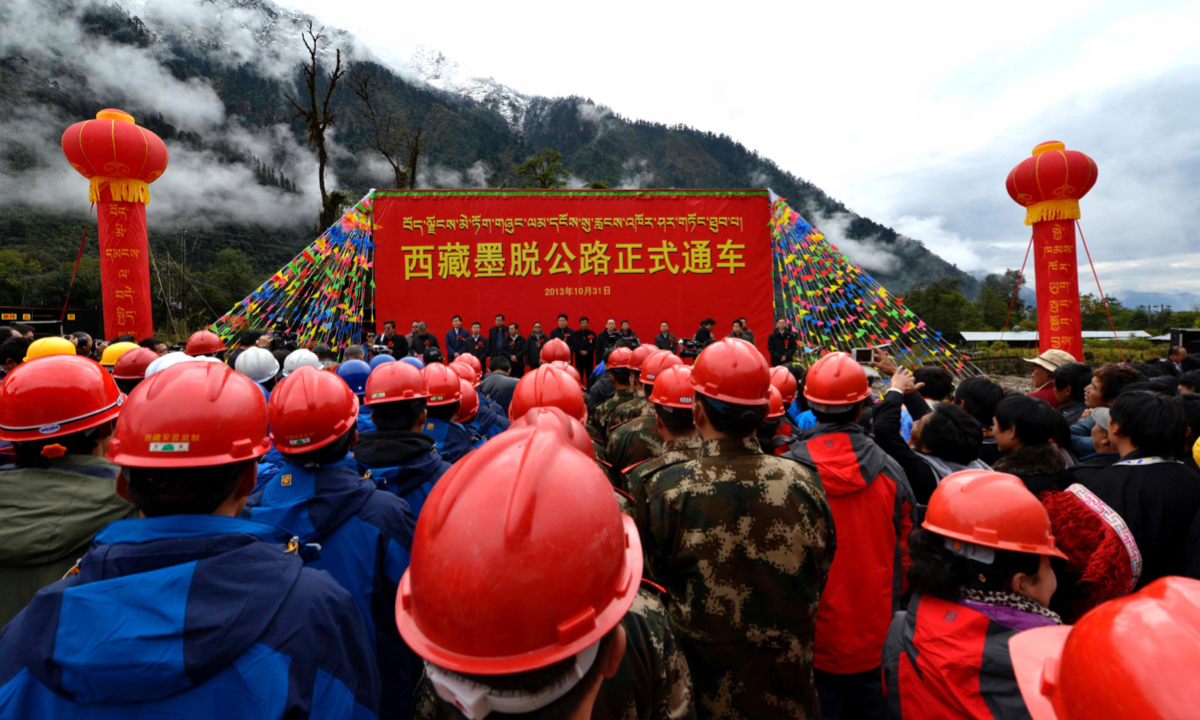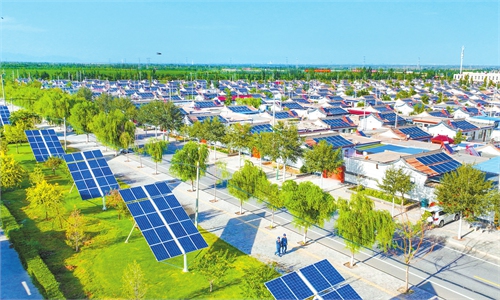
Rural road Photo: VCG
China's State Council Information Office issued a white paper titled China's Rural Roads in the New Era on Friday to introduce the achievements and vision of rural road development and to share the country's wisdom and solution to the world.
According to the white paper, from 2014 to 2023, a total of 2.5 million kilometers of rural roads were built or renovated, and 70,600 villages were connected by paved roads. The total length of rural roads reached 4.6 million kilometers by the end of 2023, an increase of 21.7 percent over 2013, enough to circle the equator 115 times, the white paper said.
China's non-toll rural roads constitute the most extensive component of transport infrastructure and serve a significant majority of the population. They play a critical role in assisting the rural population in their travels, improving their well-being and living environment, and advancing the modernization of agriculture and rural areas, read the white paper.
Ten years ago, Chinese President Xi Jinping issued instructions on rural road construction to eliminate the traffic bottlenecks restricting rural development, and to facilitate poverty alleviation work in the countryside.
He ordered that rural roads be built well, managed well, maintained well and used well. For this reason, these roads have become known as "Four-Wells Rural Roads," or "Sihaonongcunlu" in Chinese. In May, Xi issued a new instruction on work related to rural roads, urging unremitting efforts be made to upgrade rural roads to facilitate rural development.
In recent years, the Ministry of Transport and other central and local authorities have made notable achievements in improving rural roads, boosting the sense of fulfillment, happiness and security of rural residents, Xi said.
Better rural roads will provide solid support to bring common prosperity to rural residents, facilitate rural revitalization, and accelerate the modernization of China's agriculture and countryside, Xi said.
Guided by Xi's instructions, China has continued to implement the high-quality development of rural roads through institutional innovation, better policies, systematic planning and targeted policy implementation. This has led to significant improvements in the coverage, accessibility, maintenance, services, safety, and resilience of rural roads.
Better transport has cleared bottlenecks that had long delayed economic and social development in poor areas, and has laid a solid foundation for rural people to realize moderate prosperity in all respects, the white paper said.
According to the white paper, the steady development of transport facilities in rural areas has attracted more capital, projects and talent to the countryside, creating more job opportunities and broadening the avenues for income growth.
At present, rural road construction projects provide work for about 80,000 people in need as a form of relief, enabling an annual average per capita income increase of around 8,500 yuan (about $1,182.57), the white paper noted.
About 850,000 jobs are provided in rural road management and maintenance, offering an annual average per capita income of approximately 13,000 yuan, it said.
While broad highways connect mountains and rivers over this vast land, rural roads buttress common people's dream of prosperity. China has explored an approach to developing rural roads in light of its realities, contributing Chinese wisdom and solutions to global poverty reduction.
Since 2018, China has supported 24 developing countries, including Cambodia, Serbia, Rwanda, Namibia, Vanuatu and Niger, in highway and bridge construction and maintenance. These efforts have helped these countries improve their transport infrastructure, according to the white paper.
Today, as China embarks on a new journey of promoting national rejuvenation through Chinese modernization, the country's rural road endeavors have entered a period of historic opportunity. China will implement a new round of rural road upgrading programs covering road network expansion, road safety, transport capacity, governance ability, public services, the road environment, the integrated development of transport and local industries, and the growth of employment and rural incomes. These efforts will improve the modern rural transport system, open a new chapter of rural road development, and build up China's strength in transport, read the white paper.
As China's modernization advances, by 2035, the country will have in place a rural road transport system with a sound scale and structure, high-quality infrastructure and services, and rational and effective governance. By the middle of the century, China will become a great modern socialist country with a safe, convenient, green and beautiful rural road transport system, according to the white paper.
In a spirit of openness and mutually-beneficial cooperation, China will strengthen international exchanges and collaboration in exploring new models and paths of rural road development, further contributing to global rural road development and poverty reduction, and building a global community with a shared future, read the white paper.
Global Times

Construction workers lay asphalt on a road in Xinhua town, Jinping county in Qiandongnan Miao and Dong Autonomous Prefecture, Southwest China’s Guizhou Province, on September 12, 2024. Photo: VCG

Picture shows a “Four-Wells Rural Road” in Luanchuan county, Central China’s Henan Province. Photo: VCG

A ceremony is held on October 31, 2013, when Medog Highway officially opened to traffic. Medog in Southwest China’s Xizang Autonomous Region was the last Chinese county without access to highways. Photo: VCG

A monument on the Medog Highway Photo: VCG

Cycling enthusiasts compete in a road cycling competition held in Zuoyun county, North China’s Shanxi Province, along the No.1 Great Wall Tourist Road cycling route on September 20, 2022. Photo: Courtesy of State Council Information Office

Villagers walk along a road in the Tongping village, Yatunbao town, Tongdao Dong Autonomous county in Central China’s Hunan Province, on July 29, 2020. Photo: VCG

Paving the way toward a better life Graphics: Liu Xidan/Global Times



